A Deep Look Into The Softgel Manufacturing Process
As the COVID-19 pandemic spread, a growing number of people started taking multivitamins, hoping to boost the immune system to fight the virus. This has resulted in a booming nutraceutical industry.
Softgels, one of the most popular delivery systems of oral dietary supplements, are more preferred by consumers and manufacturers than ever. Consequently, the softgel market has skyrocketed over the past few years. Wanna know how to make softgel capsules? Then you may first want to know the major steps of softgel manufactruing process.
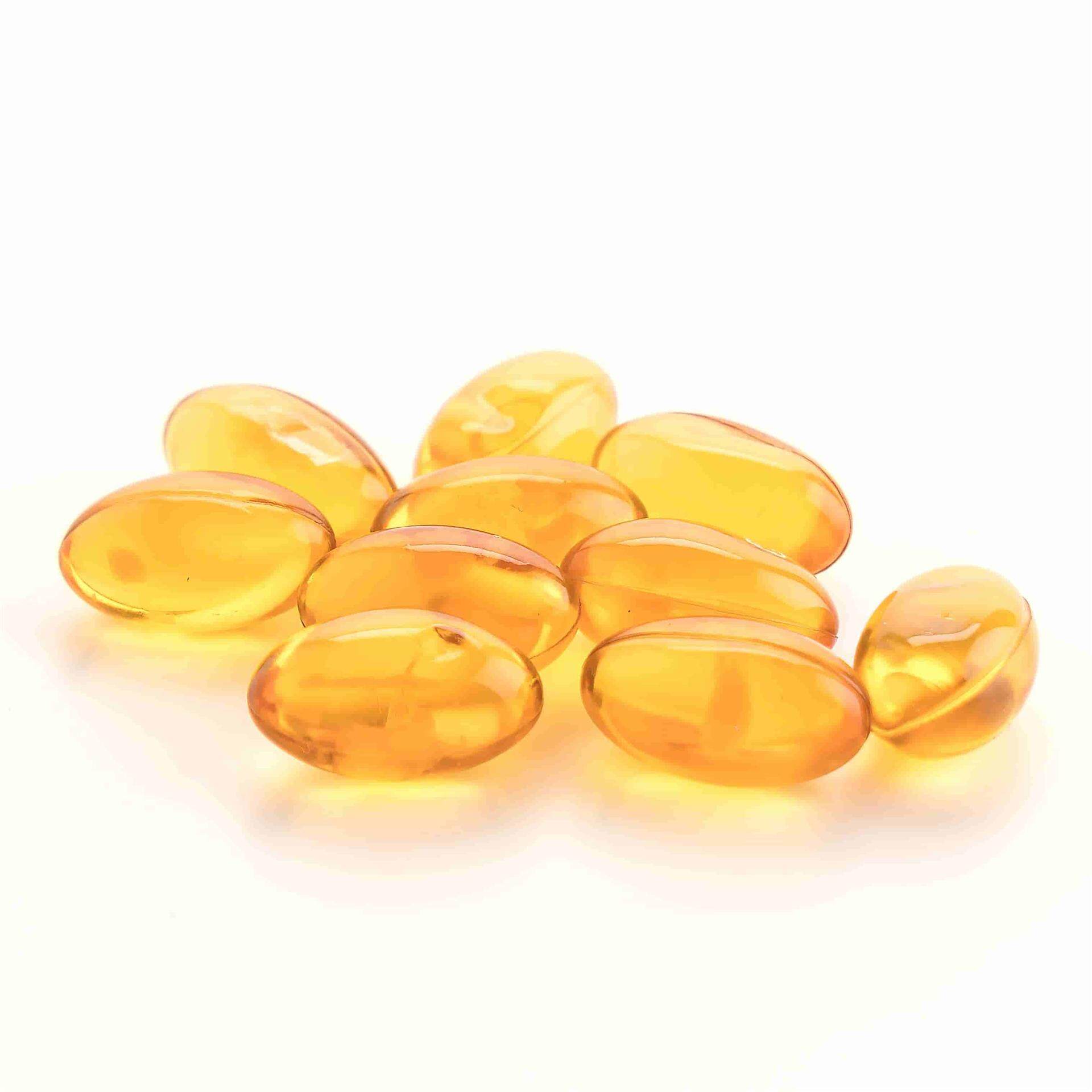
In this article, we'll walk you through all the information about the softgel manufacturing process. The more you learn, the easier it will be to select the right softgel encapsulation machine and benefit from this upsurge. Let's get started!
A Quick Tour of the Softgel Encapsulation Machine
Softgel capsule machines are typically automated since manual liquid filling can't ensure precision and efficiency. The softgel capsule machine is capable of producing completely airtight capsules with better product stability.
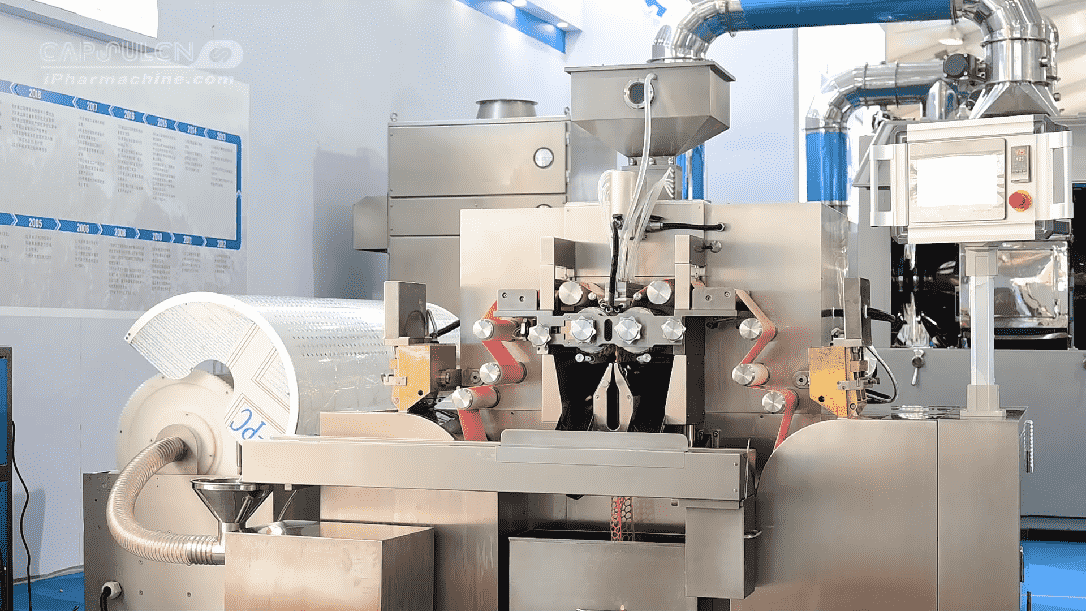
To ensure a smooth production run, you need a softgel encapsulation machine that comes with the following major parts:
1. Medicine hopper
2. Medicine pump
3. Injection wedge
4. Gelatin melting tank
5. Gelatin service tank
6. Spreader boxes
7. Casting drums
8. Lubrication rollers
9. Die rolls
10. Die roll brushes
11. Stripper rollers
12. Mangle rollers
13. Conveyor
14. Tumble dryer
15. PLC with touchscreen
One thing to note here is that a number of parts above are designed in pairs, including spreader boxes, casting drums, lubrication rollers, die rolls, die roll brushes, stripper rollers, and mangle rollers. That is because the softgel capsule shell is made by hermetically sealing the two ribbons of gelatin.
What Are the Major Steps of the Softgel Manufacturing Process?
If you've read this far, you've probably got a rough idea of the softgel encapsulation machine. So, how to make softgel capsules using this type of machine? Let's delve deeper into the 6 major steps of the softgel manufacturing process.
STEP 1: Gelatin Preparation
A softgel shell is formed to contain and protect the fill material. It typically consists of a mixture of animal- or plant-based gelatin, a plasticizer (like glycerin), water, color, and flavor. Here, the color and flavor are optional, depending on your production needs.
The shell material preparation is performed in a gelatin melting tank. This tank blends the gelatin and other ingredients in warm water while keeping the mixture at the proper temperatures. Please note that the animal or vegan gelatin's heating temperature varies due to different viscosities.
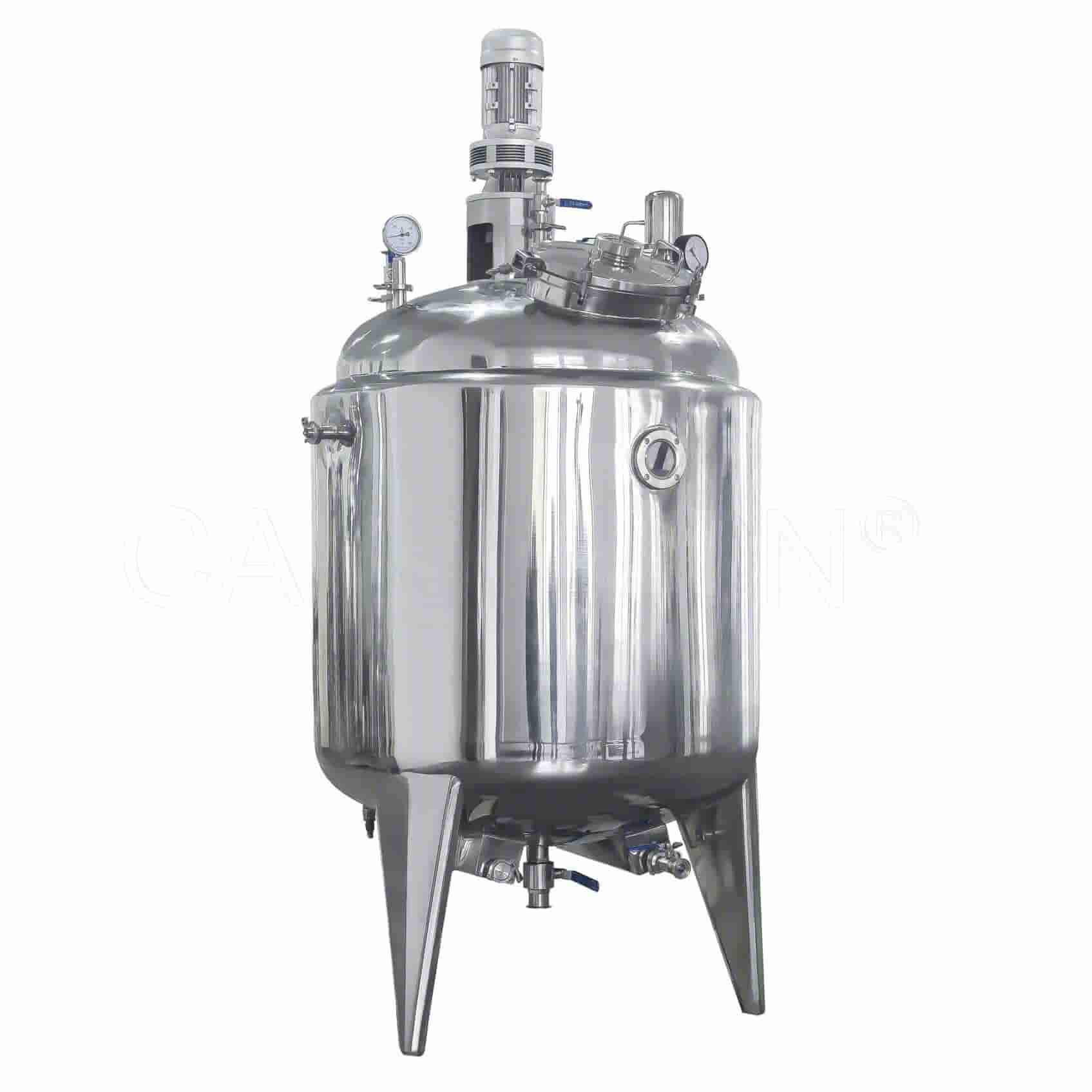
These ingredients are prepared to be a gel mass in the melting tank for use in the softgel manufacturing process.
STEP 2: Fill Material Preparation
Fill materials for softgels come in a variety of forms, such as liquids, oils, suspensions, or semi-solids. The fill materials are mixed and milled in a processing tank to form a fill mass. If necessary, the fill mass can go through the vacuum to remove any air bubbles.
The gelatin and liquid fills are then transferred to a service tank to wait for encapsulation. The service tank can precisely control the temperature of these materials.
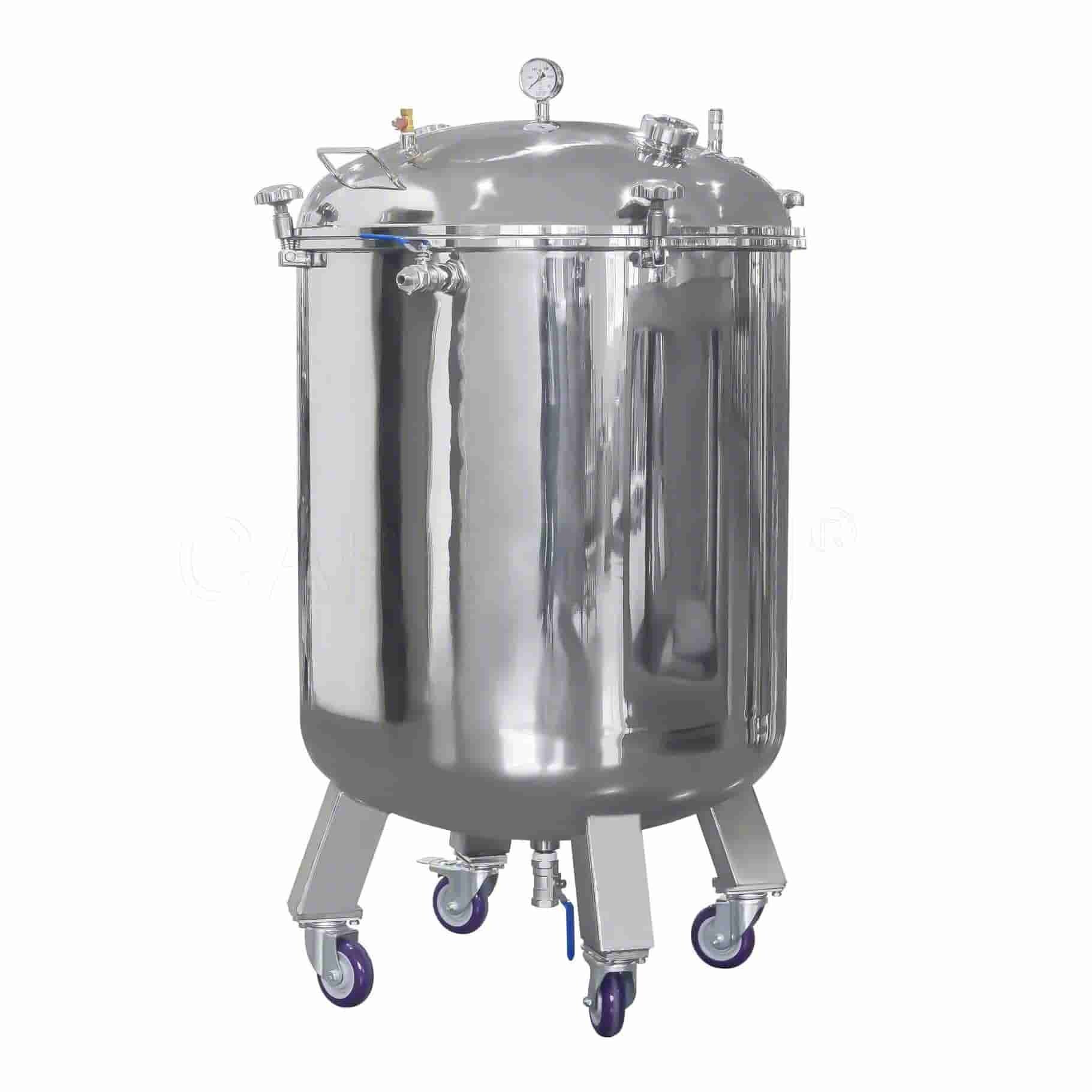
STEP 3: Encapsulation
Today, most soft gelatin capsules are produced by a method called the rotary die encapsulation process. This process was invented by Robert Pauli Scherer in 1933. The encapsulation step lies at the heart of the softgel manufacturing process. It can be broken down into several substeps as follows:
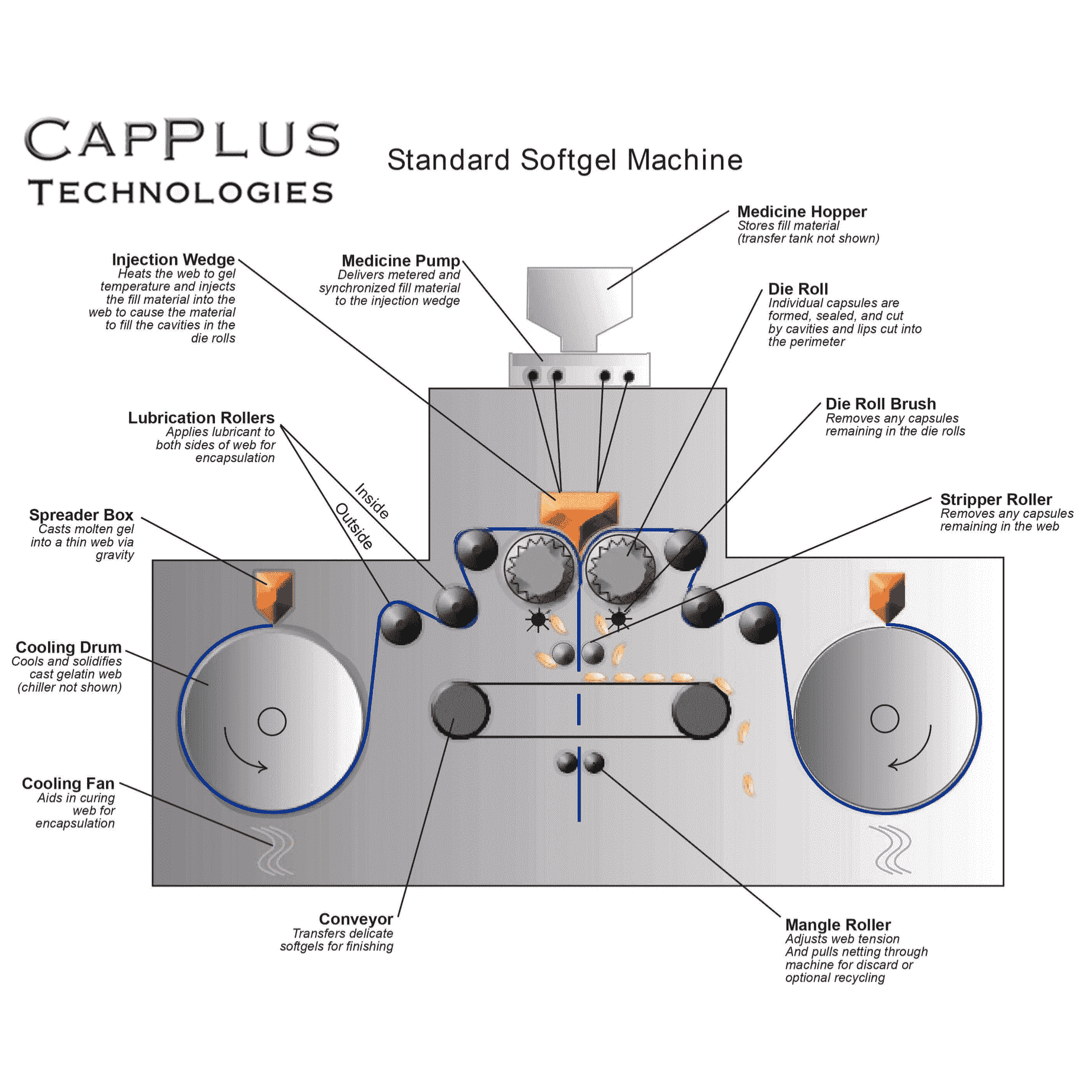
(Image Source: CapPlus Technologies)
Substep 1: The gel mass is pumped out of the service tank and fed into two spreader boxes. As the name implies, the boxes spread the gel mass onto the casting drums to form two ribbons of gelatin.
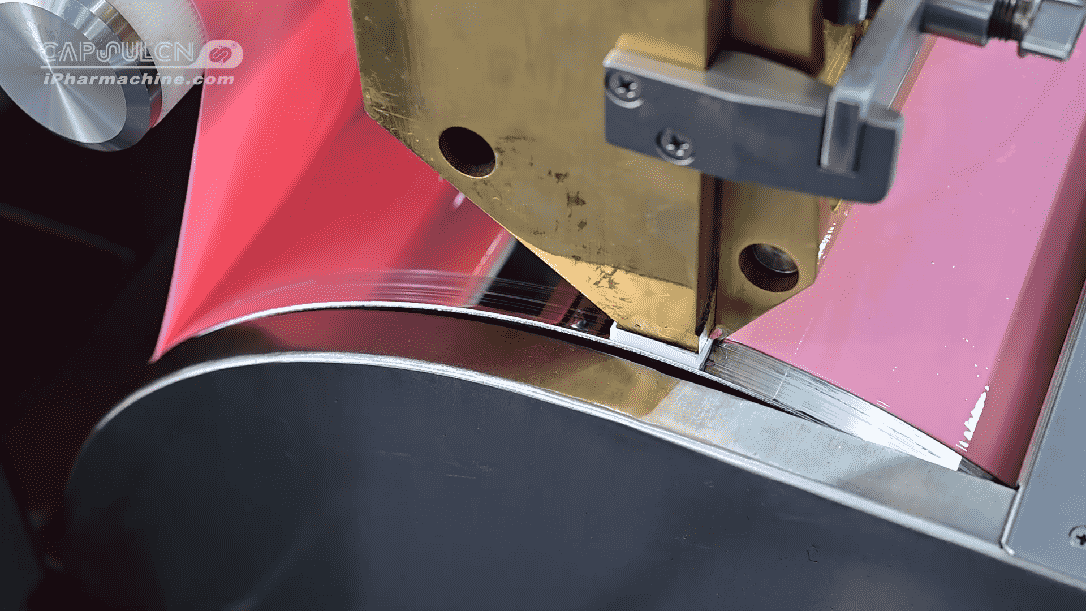
Here, the liquid gel mass turns to a solid as the casting drum can cool and solidify the gelatin during rotation. This is why the casting drums are also called the cooling drums. Modern softgel capsule machines boast a built-in cooling system or an external water chiller to perform the function.
Substep 2: A set of lubrication rollers work to feed the two ribbons to the injection wedge. These rollers are made from a porous material. They apply lubricant to both sides of the ribbons, preventing sticking.
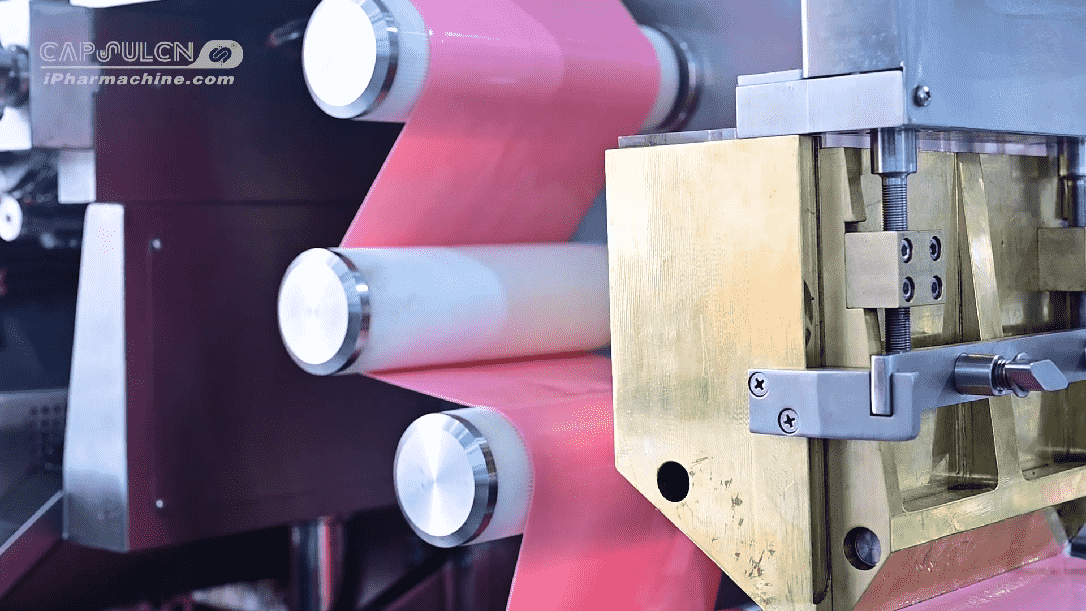
Substep 3: In the meantime, the fill mass flows into the medicine hopper and is delivered to the injection wedge by the medicine pump. The injection wedge sits between two die rolls. Also, it's electrically or water heated to preheat the liquid fills and gelatin ribbons before softgel encapsulation.
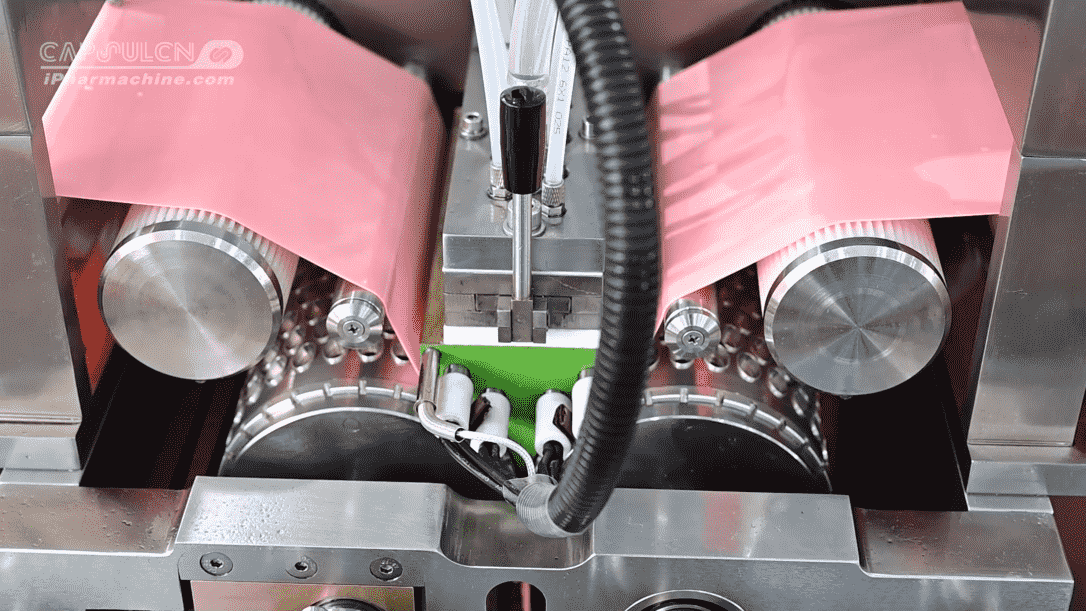
Substep 4: The two ribbons are constantly fed between two die rolls and fill the pockets of the die rolls to form the two halves of a softgel shell. At the same time, the injection wedge injects the fill material into the shell using the dosing channels.
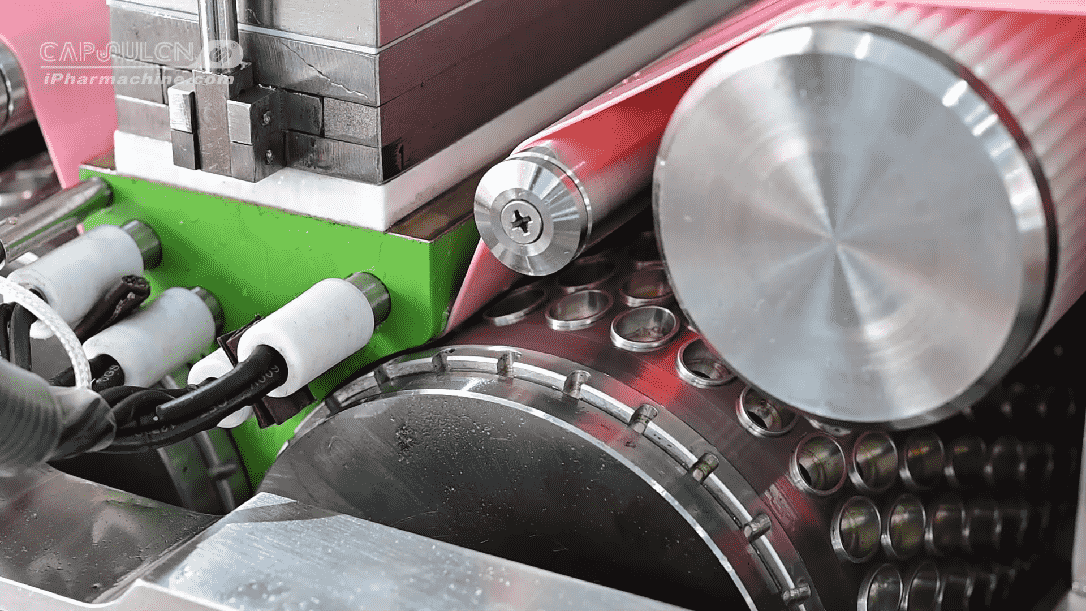
Substep 5: The die rolls continue to rotate. The fill material is encased in the two halves of the softgel shell and then sealed together using heat and pressure.
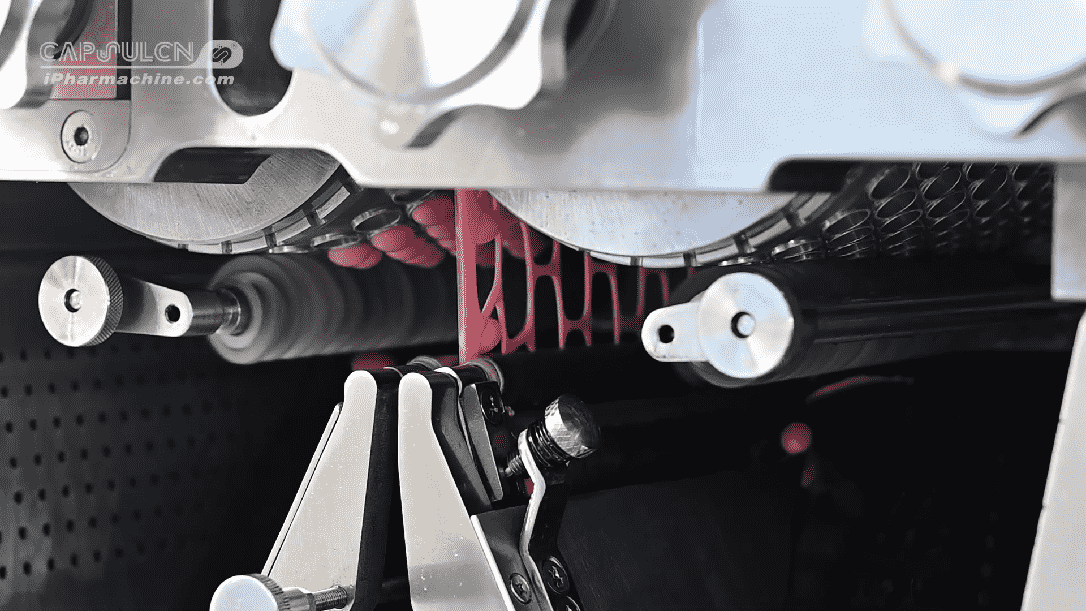
Substep 6: As the die rolls rotate, the sealed softgel capsules are pulled out of the ribbon. And then, these softgels are removed from the pockets of the die rolls using a pair of die roll brushes.
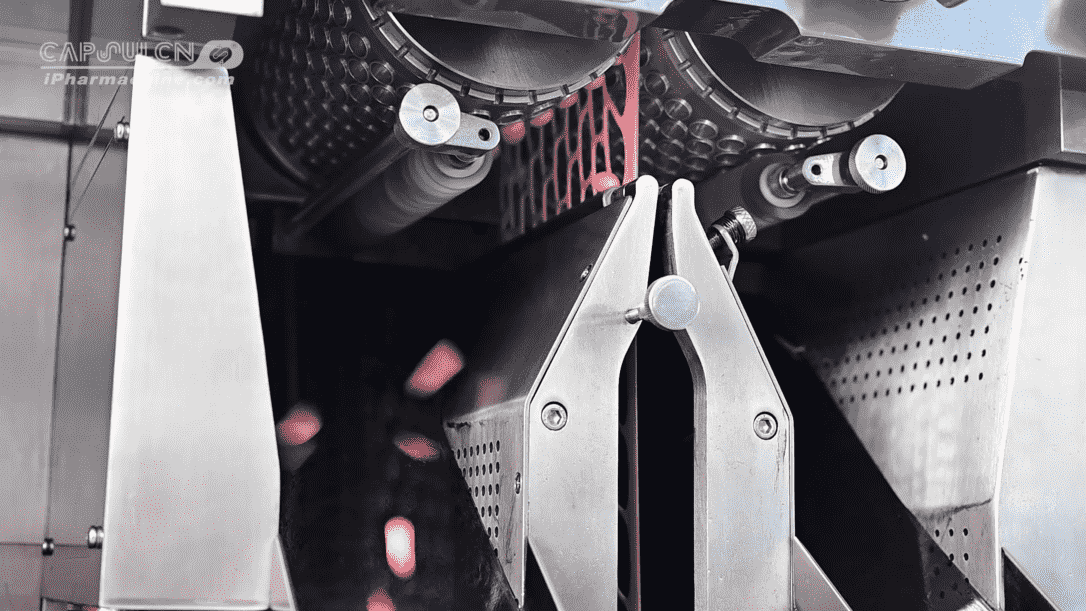
Substep 7: The ribbon goes down and passes through a pair of stripper rollers. The two rollers push out the softgel capsules that get stuck in the ribbon.
Substep 8: After the ribbon passes through the two stripper rollers, all softgel capsules are ejected. The remaining gelatin, a.k.a. the netting, is pulled down by a pair of mangle rollers into a net collector.
STEP 4: Drying
Following encapsulation, the formed softgel capsules fall onto a conveyor. The conveyor transfers them to the next step - softgel drying.
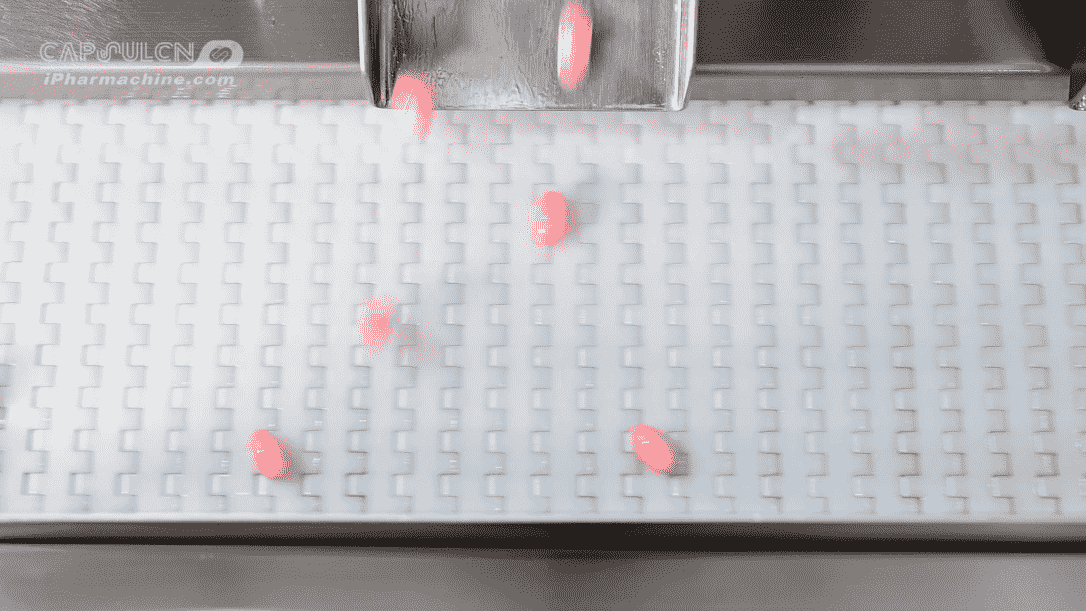
Drying is also a critical step of the softgel manufacturing process. In this step, the softgel capsules are directly transferred into a tumble dryer by the conveyor. The tumble dryer works to remove any excess moisture on the softgel capsules using lint-free towels and forced air.
STEP 5: Inspection and Sorting
Following complete drying, the softgel capsules should be transferred to the inspection station for quality control. This is an important step in the softgel manufacturing process.
Even though you're using a state-of-the-art softgel encapsulation machine, it cannot guarantee zero defects. So, your products need to be inspected to prevent any undersized or oversized, deformed, or leaking softgels.
To carry out this step, you need a softgel inspection machine and a sorting machine. These machines are designed to provide visual inspection and sorting of softgel capsules. They automatically inspect the entire surface of the softgel capsules and sort out defectives based on color, shape, thickness, or diameter requirements.
STEP 6: Cleaning and Polishing
After sorting out qualified softgels, you can use a softgel polishing machine to remove any oil residue or debris from the softgel surface.
To make your softgels stand out from your rivals, you can customize the capsules using a wide range of printing applications, such as product names, brand logos, and feature pictures.
It is plain to see that the softgel manufacturing process is quite simple. Yet, before you decide to add softgel production into your business, let's take a look at some key considerations you need to keep in mind.
Important Considerations for Softgel Manufacturing
As you can see, the softgel manufacturing process is totally different from tableting or hard-shell capsule filling. If you want to be a softgel manufacturer, there are several key factors that you need to consider.
1. Equipment speed
As a start-up, you first need to consider the output you can get from the softgel manufacturing process. This is where the equipment speed comes into play. Yet, faster is not always better. You have to consider your production scale and the operator's capability.
2. Equipment quality
When we talk about equipment quality, we're actually talking about reliable manufacturers or suppliers that offer the machines.
High-quality equipment ensures maximum efficiency. How do you know whether you're investing in the right softgel encapsulation machine? The answer goes to finding reliable, top-rated softgel encapsulation machine manufacturers like iPharMachine.
At iPharMachine, we offer an extensive selection of pharmaceutical machinery. Our softgel capsule machines are all GMP- or cGMP-compliant, featuring versatility and flexibility. The RJWJ Series Softgel Encapsulation Machine can be integrated with the drying system and other support equipment to complete the entire softgel manufacturing process, meeting all your production needs, from lab-scale to commercial production.
3. Installation and training
If you're new to softgel encapsulation machines, equipment installation and employee training will be the priority to begin softgel manufacturing.
A dependable equipment manufacturer or supplier like iPharMachine will provide you with the best services for installation and training. We also offer custom training to meet the specific needs of your employees, allowing them to be equipped with the necessary skills and knowledge to handle the softgel capsule machine more easily.
4. Process assessment
If you want to scale up your production someday, regular assessments of your softgel manufacturing process are required. Always keep an eye out for ways to improve output and machine efficiency. This way, your business will continue to advance in the right direction.
Final Thoughts
Even though the softgel manufacturing process can be challenging, the right equipment will make it simple. At iPharMachine, we are confident that we can meet all of your softgel manufacturing requirements and that we’d be the ideal partner for your business.
Leave your comment
Also Offers


Containment Automatic Capsule Filling Machine SFK-703

Fully Automatic Dosator Capsule Filling Machine CZ-40

Our Team
As an expert in the pharmaceutical and pharmaceutical packaging industry, iPharMachine has provided solutions for hundreds of pharmaceutical and health product manufacturers for 17 years. By visiting customers, we get good reviews from our customers.
- info@ipharmachine.com
- English Español Deutsche







